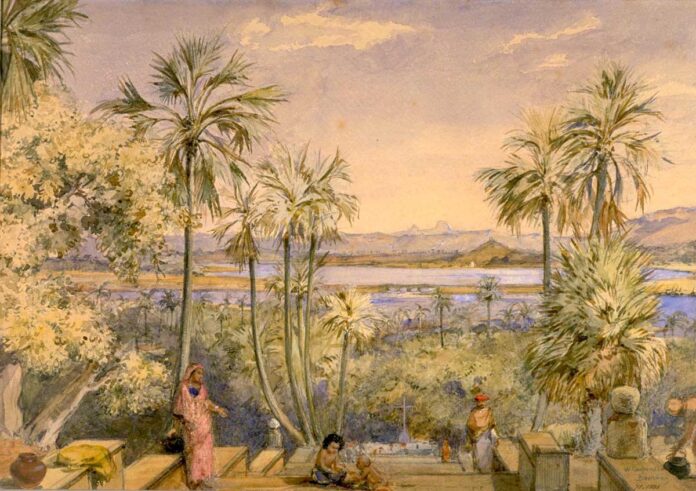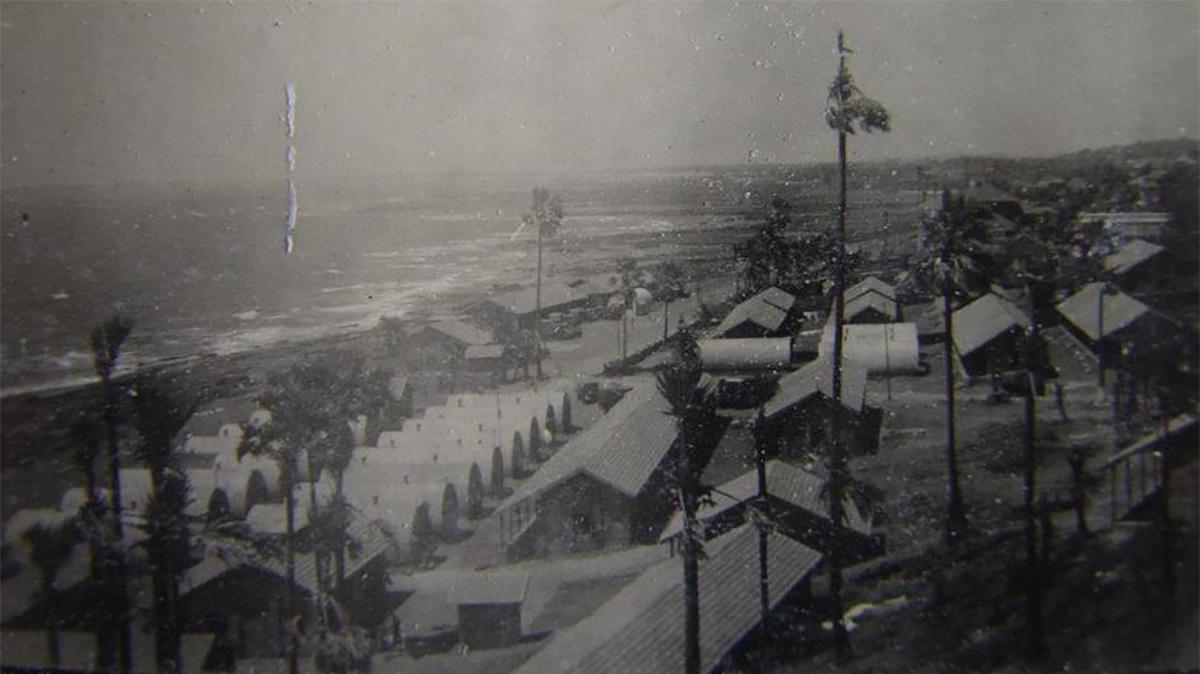Bandra has grown from a little fishing village in the 1530s to a suburb with one million people today. More importantly, it is the third-largest commercial hub of Maharashtra (after Mumbai and Pune) and, arguably, the banking capital of India.
I thought it would be fun to map some events in the history of the world with the growth of this little suburb. “Little” because it is just about 25 square kilometres when you include both Bandra East and West (and charitably include some parts of Khar and Santacruz). By the way, the Indira Gandhi International Airport in Delhi is spread over 20 square kilometres, so that gives you an idea of how small Bandra is (or how spread out the Delhi airport is).
Mughals Couldn’t Care Less
Bandra thought it was a good port, and some of the fishermen who used it thought so too. But the rest of the world wasn’t too sure. When the Mughals ruled India, their main port was Surat. This was the place from where India traded with the Arabs, and hence with the rest of the world. Surat was also the passenger terminal for people travelling for Haj. At the time, nobody cared much for the seven tiny islands that we today called Mumbai, or the larger island called Salsette, which is where Bandra is.
The Pirates Arrive
Maps. This was the secret of the success of many European nations. Maps, especially navigational maps, were confidential documents that were the property of the Kings of Europe and were only given to favoured explorers and merchants. In return, these explorers had to update the maps and return them to the Kings on their return.
One of the leaders in this field was Portugal. They had great maps that not only showed where the lands were but also where the currents flowed in the Atlantic Ocean. They had worked out, for example, that the fastest way to go from Portugal to Africa was via Brazil! They figured out that sailing due south from Portugal was hard and returning even harder. However, if you went West, the current carried you to the South American shores of Brazil and another current would then carry you to Africa. Simple!
As an aside, São Paulo, Rio de Janeiro and Mumbai are the three big metropolises which have a Portuguese influence. Mumbai’s Portuguese influence is mostly concentrated in Bandra. Let me tell you how that happened.
The Portuguese were interested in buying spices like pepper from India. Why they wanted spices is another story (short version: to disguise the taste of stale meat). The Arabs used to sell pepper to the Europeans but charged huge premiums. So the Portuguese (and the Spaniards for that matter – remember Columbus?) were trying to find a direct sea route to India. Well, Vasco da Gama found the route first, but that is when the problems started.
The problem was that the Portuguese had nothing to buy the pepper with. They didn’t have much gold or silver, and the Indians weren’t interested in the utensils and textiles they offered. So they came up with an innovative idea. Piracy.
The Portuguese were thugs who had mastered another technology – how to mount guns on ships. Now they could fire at other ships from a distance and damage or even sink them. The others didn’t know what to do, since they fought via hand-to-hand combat.
So the Portuguese decided that the best way to make money was to threaten to sink merchant ships who plied across the Arabian Sea unless they paid them a ransom. This strategy worked and the Portuguese set up a series of forts all over the west coast of India – from Cochin to Goa to Bandra to Daman and Diu. They used these forts to rest between raids, and also to store the goods that they bought with their ransoms before shipping them to Portugal.
A guy called Diego da Silveira sailed into Bandra port in 1534 and conquered it. So Bandra (and the rest of Salsette island, as well as the seven southern islands that we call Mumbai) came under Portuguese rule.
The Jesuits Followed
The Portuguese were busy stealing, making profits and doing other bad things that we need not go into now. So in a time-honoured way, they decided that they would square things up with God by doing a bit of religious service. They decided to finance Jesuit priests, who could then convert the natives.
While the intentions were good, the actions weren’t. The pirates “forgot” to give money to the Jesuits, who complained to the Pope and the King. Long story short, the King of Portugal had to intervene and it was decided that Bandra (including what is Khar and Santacruz today) would be given to the Jesuits to tax and rule.
The Jesuits got possession of Bandra in 1570 and set to work converting the locals. By the mid-1650s, their job was done and the whole of Bandra had converted to Christianity. Unfortunately, they were not able to enjoy this for too long after that.
The Europeans Also Had Dowries?
In 1661, Bombay was given as a dowry by the Portuguese to the English King. However, Salsette island (and therefore Bandra) was not part of this dowry. So the Portuguese continued to pirate on the high seas from Bandra and other places until the English got irritated with them. There were some skirmishes, but finally, a treaty was signed in 1775 and Salsette was also taken over by the English.
We Keep Forgetting About the Marathas
School children in India learn about the Mughals and then the English. We don’t realise that there was a period of nearly 150 years when the Mughals were steadily losing power, and the English did not have control over much of the country. The dominant powers at that time were the Marathas. Of course, they were not united, and different families ruled in different parts of the country. The Peshwas, the Scindias, the Holkars, the Gaekwads, and the Bhonsales were some of the major families in power at the time.
The Marathas had several battles with the English, winning some and losing others. The Peshwas took Salsette from the English in 1779 but then lost it in 1802. So Bandra went from the Portuguese to the English to the Peshwas and then back to the English.
Meanwhile, On the Other Side of the World…
While all this excitement was going on in India, the English fought and lost a war on the other side of the world. This led to the creation of a new country called the United States of America. This didn’t affect Bandra for a long time.
During this period, Bandra progressed from being a set of sleepy villages to becoming a set of sleepy villages which had become a weekend resort for a few rich people who lived in Bombay. Bandra was then what Alibag is today.
The Civil War in America Changed That
The textile mills of England were dependent on cotton shipped over from the USA. During the civil war, these supplies got disrupted and led to some anguish in Lancashire and other parts of England. They needed cotton, and they needed it fast.
India to the rescue. Our country has always been famous for its cotton, and so now there was an opportunity to export it to England. By the time of the civil war, the East India Company had changed from a trading company into one that governed the country. They had delegated trading duties to private companies. The opportunity in exporting cotton was grabbed by a bunch of people who went on to establish large industrial groups in India.
The cotton boom resulted in a lot of newly wealthy families who wanted to live in Bombay because they had to work here. However, the English weren’t keen on having these natives live in proximity to them. Anyway, Bombay by now was getting quite crowded.
Bandra became the residence of choice for the newly rich. The climate was better. There was more space. And the English were at arm’s length away. There were so many people who wanted to build bungalows, that Bandra initiated its first Town Planning Scheme (TPS-1 – this scheme has been updated several times since and we are now on TPS – 3). Neat lanes were created with plots that weren’t too big or too small.
The only problem of living in Bandra was the challenge of reaching Bombay. You needed to take a boat to cross over into Mahim. During the monsoon, this was a risky endeavour and led to the loss of a few lives. Also getting cotton from the hinterland to the port was a challenge too.
Two big changes took care of that. One was the building of the Mahim Causeway – a bridge between Bandra and Mahim which was built at a cost of Rupees One Lakh by Lady Jamshetjee, the wife of one of the wealthiest traders of Bombay (he of JJ School of Art and JJ Hospital fame). The other was the start of India’s first railway. The first rail tracks were between Bori Bunder (in south Bombay) to Thane, but by 1867, this came to Bandra as well.
One Bubble Burst and Another Starts
The American civil war lasted from 1861 to 1865 and the cotton boom ended as suddenly as it had started. By this time there were several traders with experience in international trade, but with no market to trade-in. Enter China.
The English had become rather fond of Chinese tea, and there was a large and growing market for this back home. The UK government helped by reducing import duties on tea. However, there was one problem – what were the English going to trade against the tea? Turns out the Chinese were keen on Indian cotton, and even more on opium. So if the English could force Indians to send cotton and opium to China, then the Chinese would give them tea. So the English got tea, the Chinese got opium and India got the Raj.
While India suffered from the opium trade, Bandra prospered. The population grew dramatically and the orientation of the town shifted away from the sea and towards the railway station. Later Bandra got a second station which was called Khar Road.
Warm Welcome to the Sindhis
Bombay city played a pivotal role in India’s Independence movement. It was the home of major leaders like Sir Dadabhai Naoroji, Bal Gangadhar Tilak, Sir Pherozeshah Mehta, Mohammad Ali Jinnah and many more. Mahatma Gandhi started several of his initiatives from Bombay, including the Quit India movement.
However, Bandra seemed to have stayed away from all this politics. Maybe Bandra people were too busy making money. Individuals may have contributed towards independence, but I do not know anything about that.
After the partition, there was an influx of Sindhis who came over to India. Many of them were settled in Bandra (in the area that is now called Khar). And so now Bandra acquired yet another entrepreneurial community.
Bandra couldn’t stay detached from politics forever. The Maharashtra government decided to create a colony to house artists and called the area Kala Nagar. One cartoonist who lived there went on to form a political party which managed to continuously be in the news and is today in power in the state. The name of the cartoonist was Bal Thackeray and his political party is called Shiv Sena.
The Birth of Bollywood
Does the B in Bollywood stand for Bombay or Bandra? Well, Bandra can make a strong claim for the title.
The Hindi film industry did not start in Bandra, but it blossomed here. Producer-Director Mehboob Khan set up a studio that he called Mehboob Studio in 1954 and some of the biggest films of that era were produced here. Mehboob Khan himself shot Mother India here, while Guru Dutt shot Kagaaz Ke Phool, Dev Anand shot many of his movies including Guide and even Raj Kapoor’s Sangam was produced here. Today fewer films are shot in a studio, but movies like Chennai Express, Dabangg 2, Black and others were recorded here.
Bandra is the home of the biggest film stars. Dilip Kumar, Rajesh Khanna, all the three Khans, and several of the Kapoors, live or have lived in Bandra. Tourist buses will dutifully point out the houses where Shahrukh Khan, Salman Khan, Ranbir Kapoor and others live.
Shivaji Park is the Home of Cricket, But…
Bandra is the home of hockey. An article in the Economic Times said, “Never has a pin code raised so much talent in a single sport”. The list of Bandra boys and girls who have represented India in hockey is a long one. Here is a partial list: Leo Pinto, Cedric Pereira, Balbir Singh, Joaquim Carvalho, Marcellus Gomes, Darryl D’Souza, John Fernandes, Edward Aranha, Diago D’Souza, Iqbaljeet Singh Grewal, Kulwant Singh Arora, Puran Singh & Viren Rasquinha. Among the girls are Angela D’Sa, Sybill D’Mello, Fiona Fernandes and Donita D’Mello.
These aren’t the only famous sportspeople who hail from this suburb. Bandra’s most famous son is, of course, Sachin Tendulkar. He grew up in Bandra East and now lives in Bandra West, though he played his cricket in Shivaji Park.
Another world champion is Michael Ferreira, the three-times World Billiards champion. Other stars include the badminton players Nandu Natekar and Leroy D’Sa, swimmer Anita Sood, athlete Canute Mangales and cricketer Wasim Jaffer.
Money, Money, Money
Cotton, Opium, Films, Sports, what else makes money? Ah yes, technology. Well, Bandra missed the bus on that one. The price of real estate in this suburb has become so high that Startups cannot afford to be here and choose to be in more distant suburbs like Powai, Malad and Ghatkopar.
However, the thing that makes the most money is money itself. And here, Bandra has become India’s capital. Bandra-Kurla Complex (BKC) has become the headquarters of many of the major banks and financial institutions.
BKC is also the home of the diamond bourse – the world’s largest diamond exchange. Two million square feet of built-up space just used for buying and selling diamonds. Nine out of ten diamonds in the world are polished in India, and most of them are traded through this diamond bourse.
488 Years and Counting
The world started engaging with Bandra in 1534. Right through these 488 years, Bandra has somehow been a desirable place to stay for the people who are focused on making money, for the famous and the glamorous. The houses aren’t particularly great, and the roads are crowded. But you get the best eating places here, fun shopping places, and great festivals like the Bandra Fair and Celebrate Bandra. Most importantly the people who live in Bandra are proud to belong here, though they always complain about those who have come after them.


























